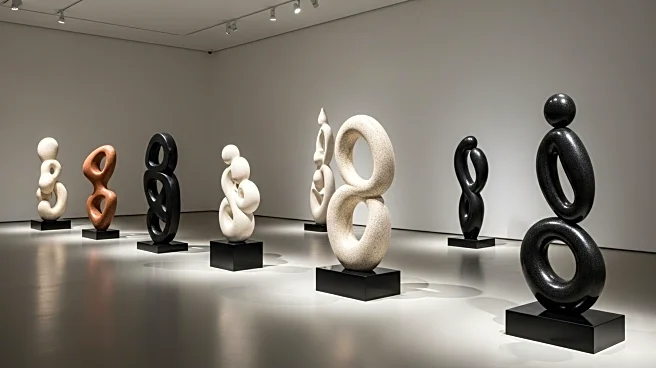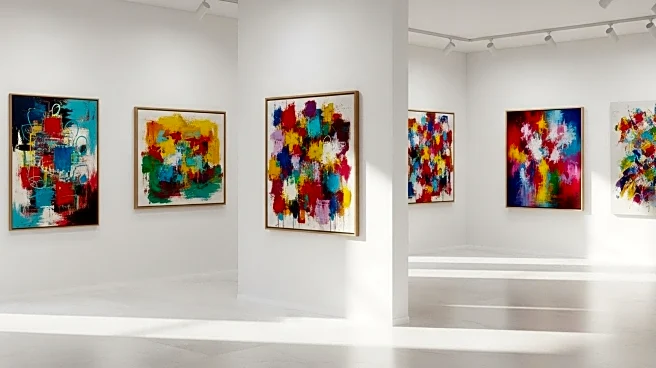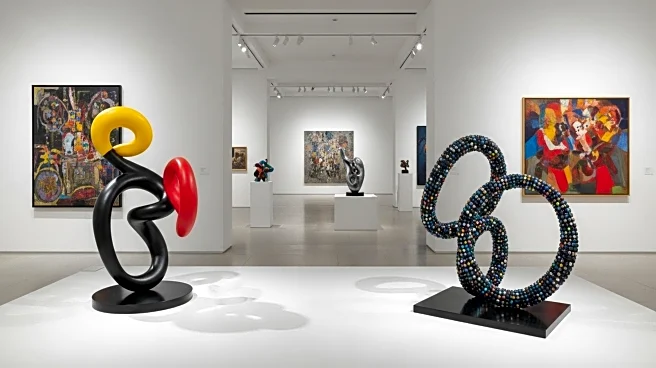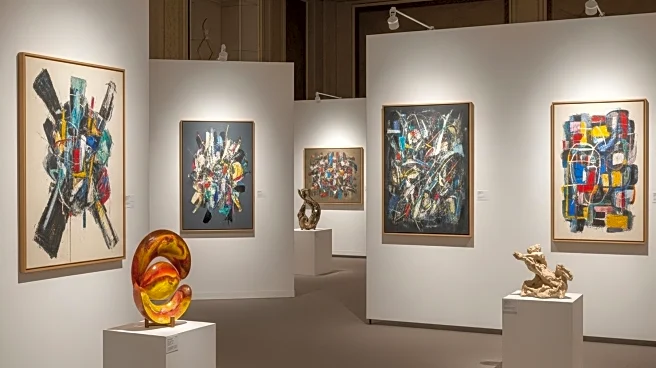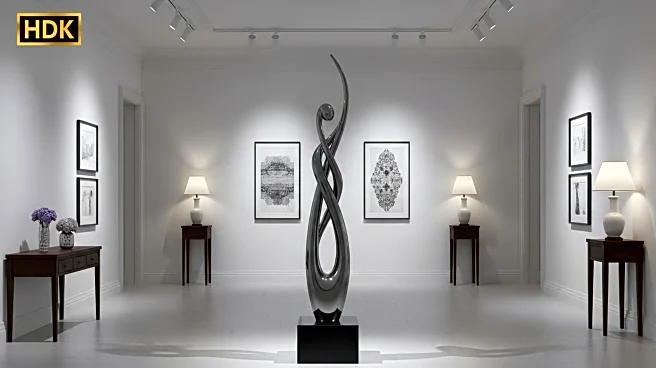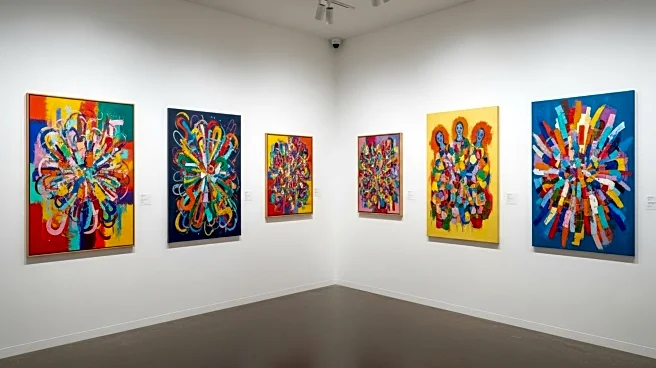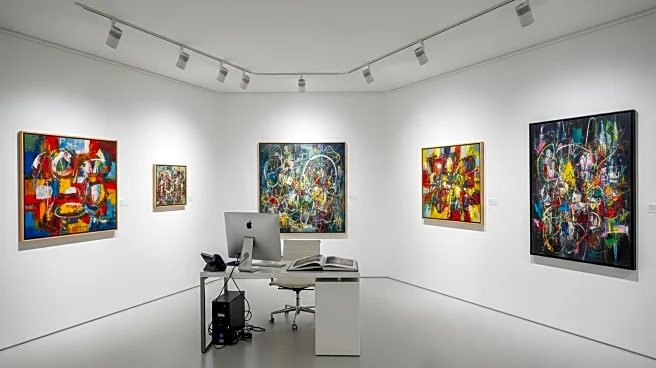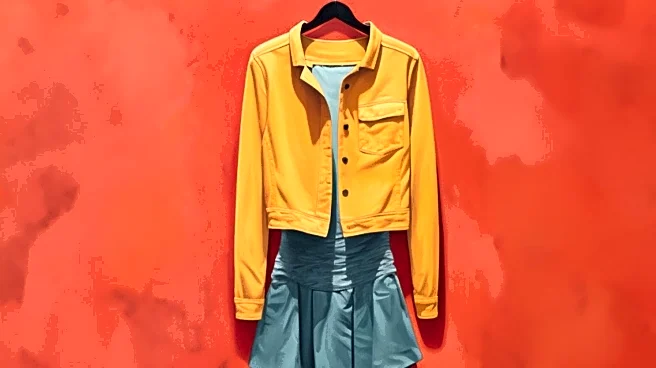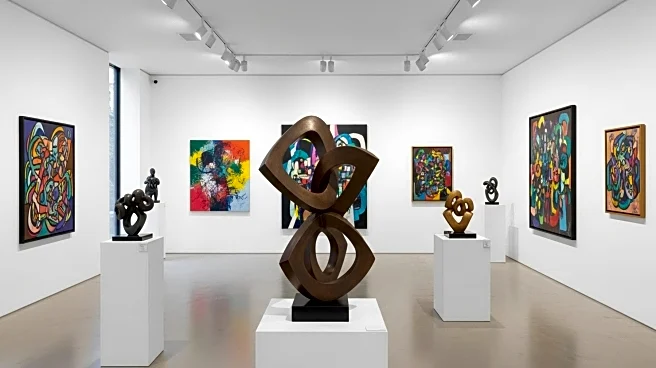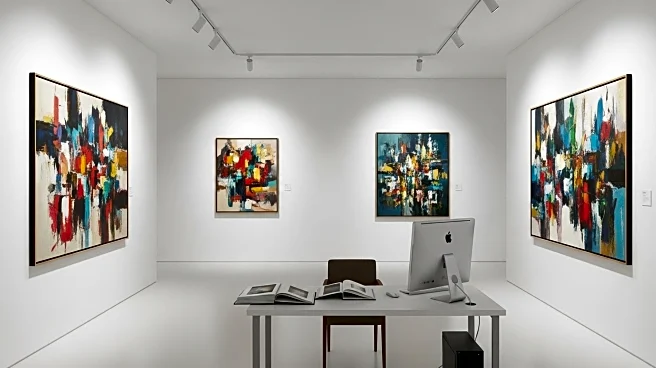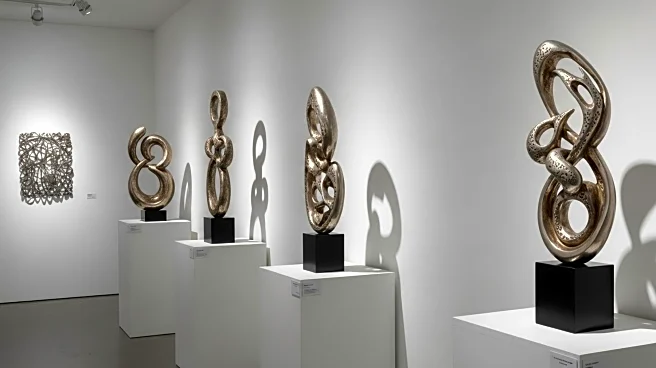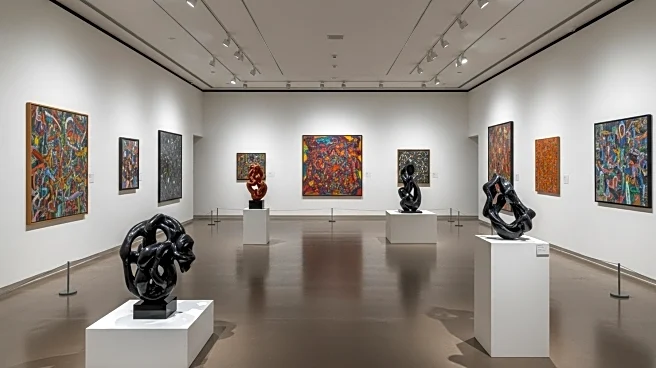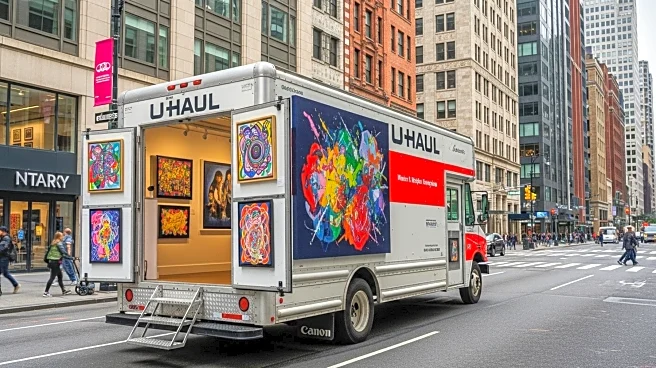What is the story about?
What's Happening?
The fourth edition of Frieze Seoul opened with strong collector turnout and solid first-day sales, despite ongoing global market turbulence. High-profile attendees included MoMA PS1 director Connie Butler and K-pop stars such as Lisa from BLACKPINK. International blue-chip galleries showcased top-tier artists, with notable sales reported by Hauser & Wirth, White Cube, and Thaddaeus Ropac. However, some galleries did not return this year, indicating uneven market performance. Korean collectors continue to favor traditional mediums and established names, despite the country's museums embracing more experimental practices.
Why It's Important?
Frieze Seoul's mixed sales performance highlights the challenges faced by the art market amid global economic uncertainty. While mega-galleries reported significant sales, smaller galleries struggled, reflecting a preference for established artists. This trend underscores the need for galleries to adapt their strategies to attract Korean collectors, who remain cautious in their purchasing decisions. The event's success in drawing international attention to Korea's art scene suggests potential growth opportunities, but also emphasizes the importance of supporting emerging artists to sustain long-term market development.
What's Next?
As Frieze Seoul continues, galleries may need to reassess their strategies to better engage Korean collectors and adapt to market preferences. The fair's role in elevating Korea's international art profile could lead to increased interest in local artists, but challenges remain in connecting emerging talent with collectors. The Korean government's support for the arts, including discount vouchers for cultural events, may stimulate further engagement and purchasing. Galleries will likely continue to explore ways to expand their collector base and navigate the complexities of the Korean market.
AI Generated Content
Do you find this article useful?
